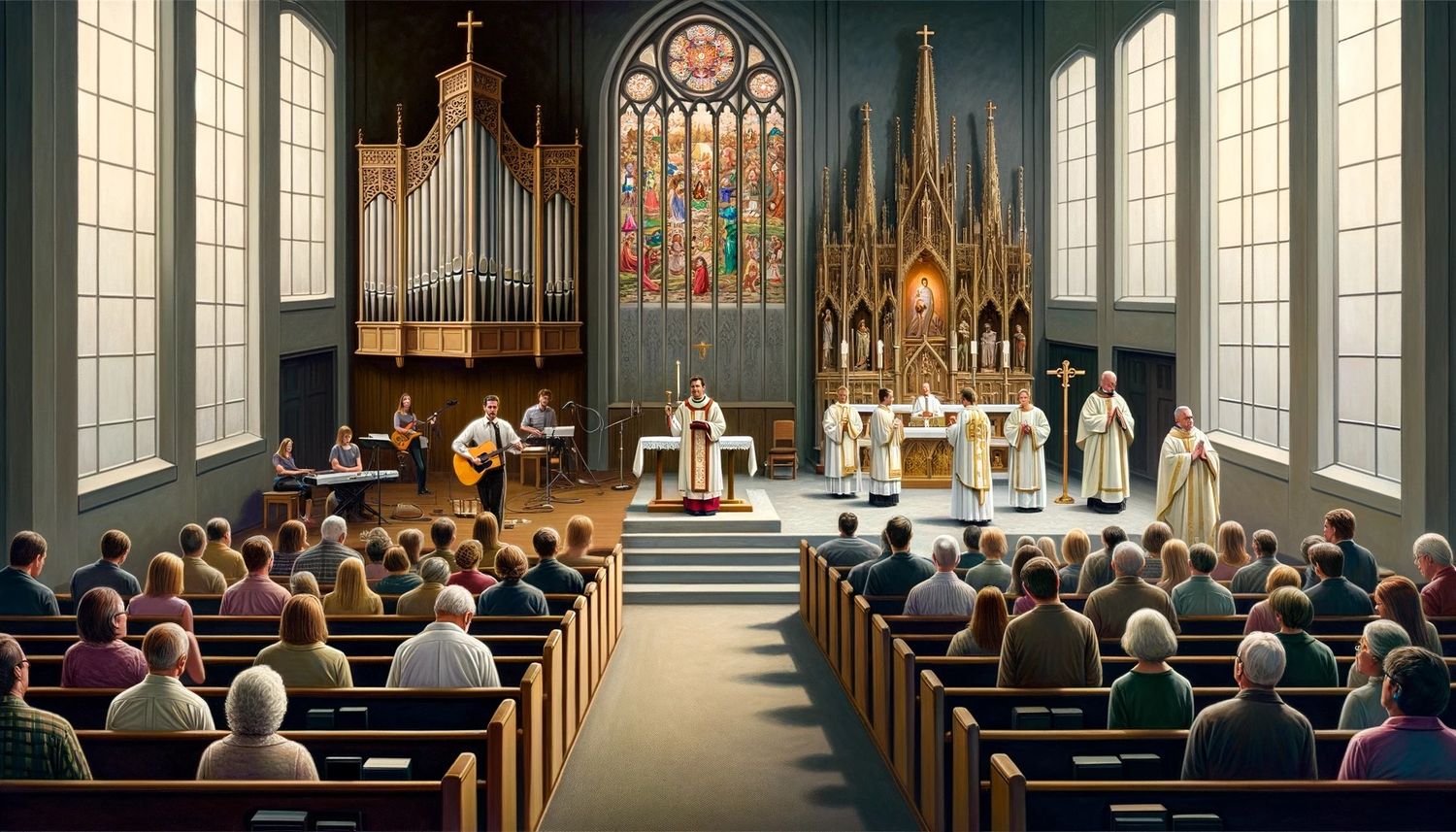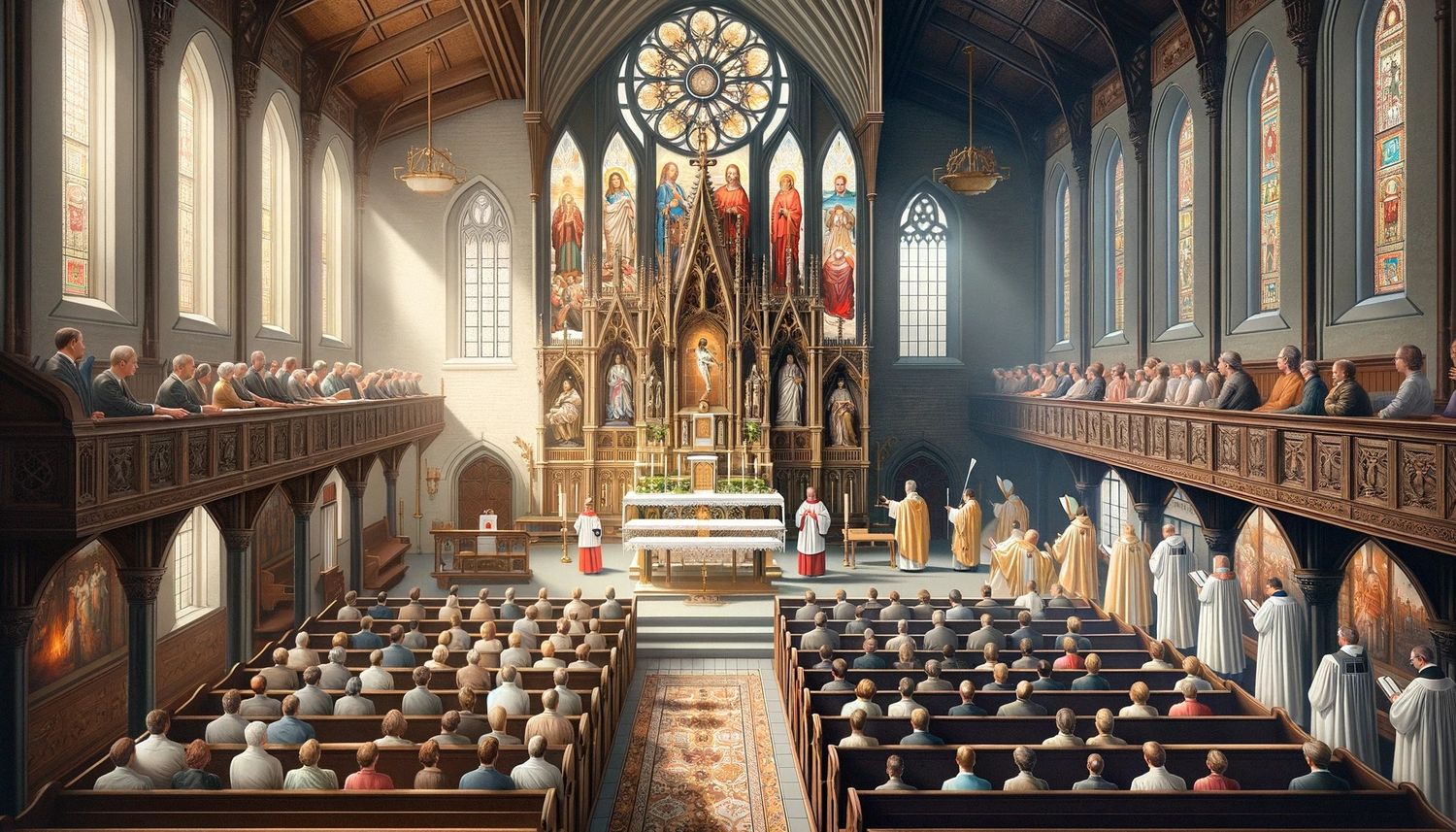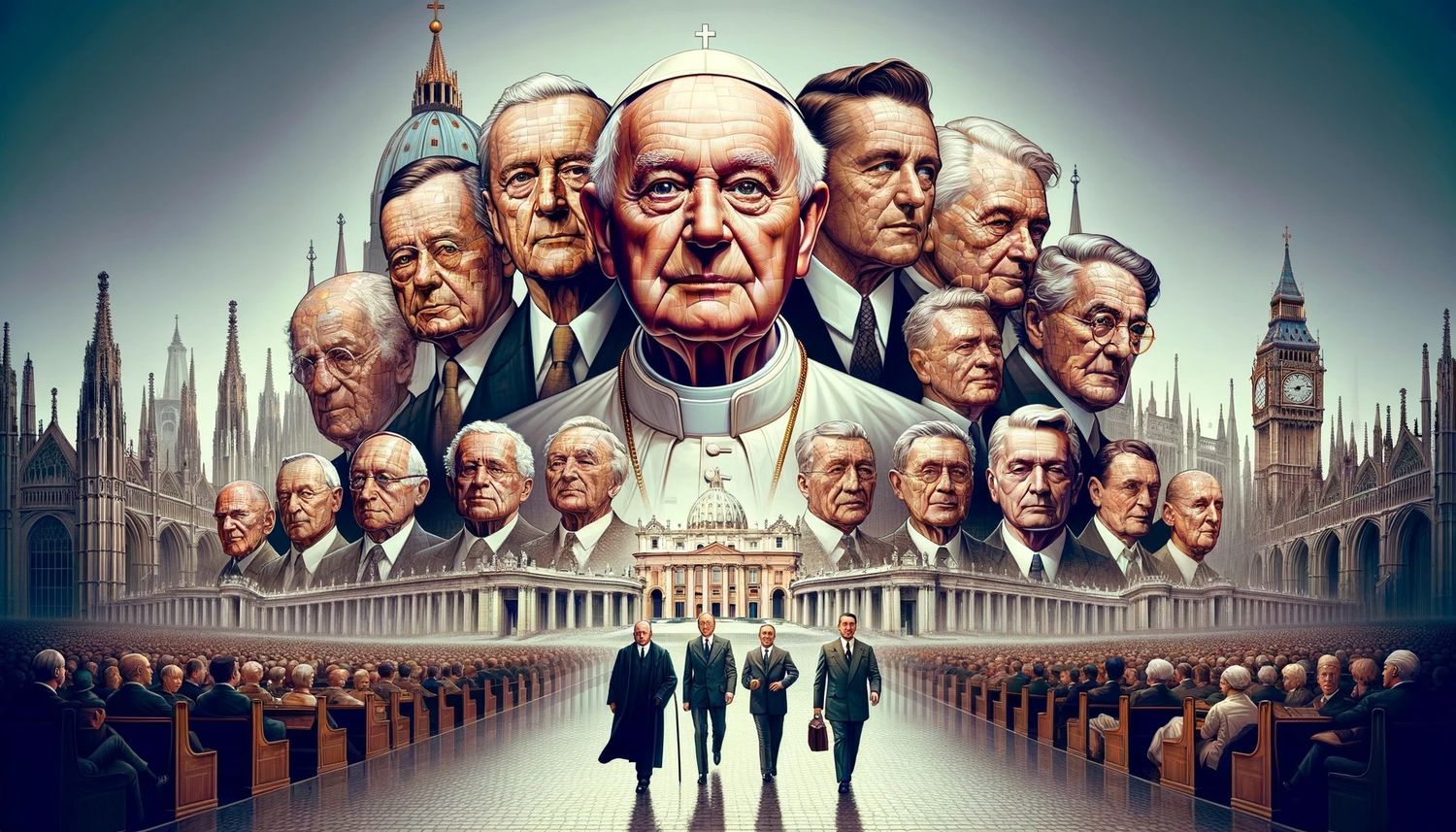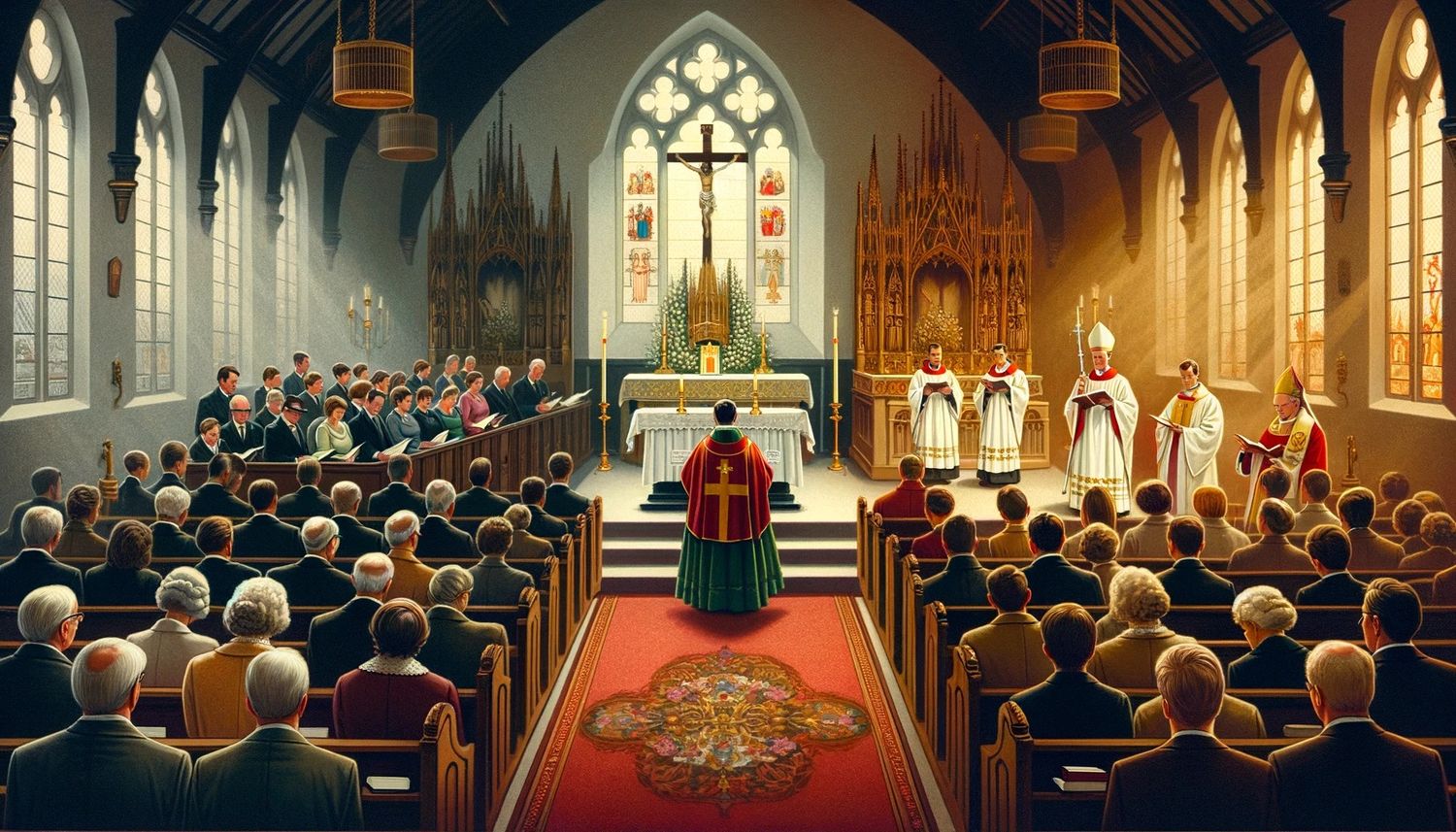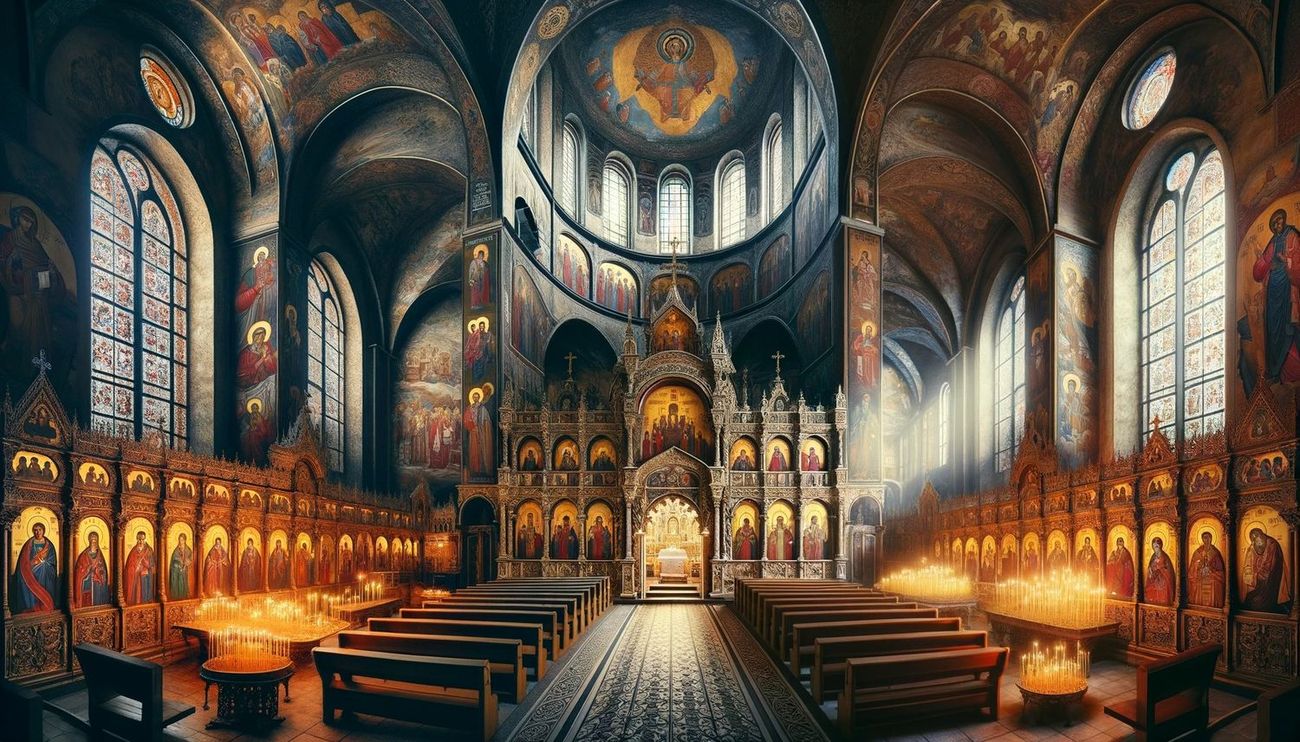Home>Theology and Spirituality>How Is Protestantism Different From Catholicism?


Theology and Spirituality
How Is Protestantism Different From Catholicism?
Published: February 15, 2024
Ericka Andersen, an editor at Christian.net, expertly merges digital strategy with content creation, focusing on faith and societal issues. Her communication skills enhance the platform's engaging narratives, fostering meaningful dialogue on belief's impact on society.
Discover the key differences between Protestantism and Catholicism in terms of theology and spirituality. Explore the distinct beliefs and practices of these two major branches of Christianity.
(Many of the links in this article redirect to a specific reviewed product. Your purchase of these products through affiliate links helps to generate commission for Christian.net, at no extra cost. Learn more)
Table of Contents
Introduction
The differences between Protestantism and Catholicism have been a defining aspect of Christianity for centuries. These two major branches of the faith have distinct theological beliefs, practices, and historical backgrounds that set them apart from each other. Understanding these differences is crucial for anyone seeking to comprehend the diverse tapestry of Christian traditions and the impact they have had on the world.
Throughout history, the schism between Protestantism and Catholicism has shaped the course of religious, social, and political developments. It has influenced the beliefs and practices of millions of people and has been a catalyst for significant events, such as the Reformation. The impact of these differences can still be felt today, as they continue to shape the identities and worldviews of individuals and communities around the globe.
In this article, we will delve into the historical roots, core beliefs, and distinctive practices of Protestantism and Catholicism. By exploring their contrasting views on authority, sacraments, worship, and salvation, we aim to provide a comprehensive understanding of the unique characteristics that define each tradition. Through this exploration, we hope to shed light on the rich tapestry of Christian thought and practice, fostering a deeper appreciation for the diversity within the faith.
As we embark on this journey, it is important to approach the subject with an open mind and a spirit of curiosity. By examining the differences between Protestantism and Catholicism, we can gain insight into the multifaceted nature of Christianity and the myriad ways in which it has evolved and diversified over time. Let us embark on this exploration with a sense of wonder and a desire to expand our understanding of the rich and complex tapestry of Christian traditions.
Read more: How Are Calvinism And Catholicism Different
History of Protestantism and Catholicism
The history of Protestantism and Catholicism is deeply intertwined with the broader narrative of Christianity. The roots of Catholicism can be traced back to the early Christian communities, with its development as a distinct entity occurring over centuries. The term "Catholic" itself means universal, reflecting the aspiration of the early church to encompass all believers. Catholicism's historical development includes the establishment of the papacy, the formulation of key doctrines, and the emergence of a rich tradition of liturgy and sacramental practice.
In contrast, Protestantism emerged as a response to perceived theological and institutional issues within the Catholic Church. The Protestant Reformation, which began in the 16th century, marked a significant turning point in the history of Christianity. Reformers such as Martin Luther, John Calvin, and Huldrych Zwingli challenged various aspects of Catholic doctrine and practice, sparking a movement that led to the formation of distinct Protestant traditions.
The Reformation was characterized by debates over issues such as the authority of the Bible, the nature of salvation, and the role of the clergy. These debates ultimately led to the fracturing of Western Christianity into various Protestant denominations and the reaffirmation of the Catholic Church's identity and teachings through the Council of Trent.
The historical trajectory of Protestantism and Catholicism has been marked by periods of conflict, cooperation, and mutual influence. The impact of these traditions extends beyond the realm of theology, shaping political and social landscapes and influencing cultural developments.
Understanding the historical context of Protestantism and Catholicism is essential for appreciating the complexities of their beliefs and practices. The historical narrative provides valuable insights into the diverse paths that Christianity has taken, as well as the enduring legacies of the Reformation and the Catholic Counter-Reformation. By examining the historical roots of these traditions, we gain a deeper appreciation for the multifaceted nature of Christian history and the enduring impact of the Protestant-Catholic divide.
Beliefs and Practices
Beliefs and practices form the core of religious identity, shaping the ways in which individuals and communities understand and express their faith. In the case of Protestantism and Catholicism, distinct theological convictions and ritual observances distinguish the two traditions from each other.
Protestant Beliefs and Practices
Protestantism is characterized by a strong emphasis on the authority of the Bible as the primary source of divine revelation. This commitment to sola scriptura, or "Scripture alone," underpins Protestant beliefs and informs their theological framework. Protestants hold that the Bible is the ultimate guide for faith and practice, and they prioritize individual interpretation of its teachings.
In terms of worship, Protestant traditions exhibit a wide range of practices, reflecting their diversity. Some emphasize the simplicity of worship, focusing on preaching and congregational singing, while others incorporate liturgical elements such as the celebration of the Lord's Supper (also known as Communion or the Eucharist). The sacraments, particularly Baptism and the Lord's Supper, hold significance in Protestant theology, though interpretations of their meaning and efficacy vary among denominations.
Catholic Beliefs and Practices
Catholicism, on the other hand, places a strong emphasis on tradition, viewing it as a complementary source of divine revelation alongside the Bible. The Magisterium, the teaching authority of the Church, plays a central role in interpreting and safeguarding the deposit of faith, which includes both Scripture and tradition. This emphasis on the Magisterium as a guide for interpreting the faith distinguishes Catholic beliefs from those of Protestant traditions.
Catholic worship is characterized by its rich liturgical tradition, which includes the celebration of the Mass, the veneration of saints, and the use of sacramentals such as holy water and incense. The seven sacraments, including Baptism, Confirmation, and the Eucharist, hold a central place in Catholic theology and practice. The belief in the real presence of Christ in the Eucharist, known as transubstantiation, is a defining doctrine of Catholic faith and worship.
Read more: Why Catholicism Is Better Than Protestantism
Distinctive Emphases
While both Protestantism and Catholicism share core Christian beliefs, such as the Trinity and the divinity of Christ, their distinctive emphases on authority, scripture, tradition, and sacraments give rise to diverse expressions of faith and worship. These differences have contributed to the rich tapestry of Christian traditions, each offering unique insights into the nature of God, salvation, and the Christian life.
By understanding the beliefs and practices that define Protestantism and Catholicism, we gain a deeper appreciation for the diverse ways in which Christians have sought to understand and live out their faith. These distinct theological and liturgical expressions reflect the multifaceted nature of Christianity and the enduring impact of historical developments on religious identity and practice.
Authority and Leadership
Authority and leadership play pivotal roles in shaping the structures and decision-making processes within religious traditions. In the context of Protestantism and Catholicism, the concepts of authority and leadership manifest in distinct ways, reflecting the theological and historical underpinnings of each tradition.
Protestant Views on Authority and Leadership
Protestantism is characterized by its emphasis on the priesthood of all believers, a concept that underscores the direct access of every individual to God without the need for an intermediary. This theological principle has significant implications for the understanding of authority and leadership within Protestant communities. Rather than a centralized hierarchy, Protestant denominations often adopt congregational or representative forms of governance, where leadership roles are distributed among clergy and laity.
In many Protestant traditions, the authority of the church is seen as derived from the consent and participation of the congregation or the broader community of believers. This democratic approach to decision-making and leadership reflects the Protestant commitment to the autonomy of local churches and the empowerment of individual believers in matters of faith and practice.
Catholic Views on Authority and Leadership
In contrast, Catholicism upholds a hierarchical structure with a centralized authority vested in the papacy and the Magisterium, the teaching authority of the Church. The Pope, regarded as the successor of St. Peter, is seen as the visible head of the Church and the ultimate authority in matters of doctrine and ecclesiastical governance. The Magisterium, comprised of the Pope and the bishops in communion with him, is entrusted with the task of interpreting and preserving the deposit of faith.
Catholic leadership is characterized by the sacrament of Holy Orders, through which bishops, priests, and deacons are ordained to serve the Church. The hierarchical nature of Catholic leadership emphasizes the continuity of apostolic succession, tracing the lineage of authority back to the apostles and ultimately to Christ himself.
Diverse Expressions of Authority and Leadership
The contrasting approaches to authority and leadership in Protestantism and Catholicism reflect their respective theological emphases and historical developments. While Protestantism prioritizes the priesthood of all believers and decentralized forms of governance, Catholicism emphasizes the role of the papacy and the Magisterium in preserving and interpreting the faith.
These differing perspectives on authority and leadership have shaped the ecclesiastical structures, decision-making processes, and theological orientations of Protestant and Catholic communities. By understanding these distinct approaches, we gain insight into the diverse ways in which religious traditions navigate questions of governance, interpretation of doctrine, and the exercise of spiritual authority.
The nuanced interplay of authority and leadership within Protestantism and Catholicism underscores the multifaceted nature of religious expression and the enduring impact of historical and theological factors on the organizational structures and decision-making dynamics of Christian communities.
Sacraments and Worship
Sacraments and worship are integral components of religious practice, serving as vehicles for spiritual expression and communal devotion within Christian traditions. In the contexts of Protestantism and Catholicism, these aspects of faith exhibit distinctive characteristics that reflect the theological and historical underpinnings of each tradition.
Protestant Views on Sacraments and Worship
Protestantism encompasses a diverse array of perspectives on sacraments and worship, reflecting the wide spectrum of denominations and theological orientations within the tradition. While the exact number and significance of sacraments vary among Protestant denominations, the two sacraments universally recognized are Baptism and the Lord's Supper (also known as Communion or the Eucharist).
In Protestant worship, there is a notable emphasis on the preaching of the Word and congregational participation. The sermon holds a central place in many Protestant worship services, serving as a means of conveying biblical teachings and fostering spiritual growth. Congregational singing, often accompanied by musical instruments, is another hallmark of Protestant worship, with hymns and contemporary worship songs providing avenues for communal praise and expression.
The celebration of the Lord's Supper, though interpreted diversely among Protestant traditions, holds significance as a symbolic or sacramental act commemorating the Last Supper and the sacrificial death of Christ. The frequency and liturgical form of Communion vary among denominations, reflecting differing theological perspectives on its meaning and efficacy.
Catholic Views on Sacraments and Worship
Catholicism places a strong emphasis on the sacramental nature of worship, viewing the seven sacraments—Baptism, Confirmation, the Eucharist, Penance, Anointing of the Sick, Holy Orders, and Matrimony—as tangible signs of God's grace at work in the life of the Church and its members. The celebration of the Mass, the central act of Catholic worship, is characterized by its liturgical richness and sacramental focus.
In Catholic worship, the Eucharist occupies a central and revered position, with the belief in the real presence of Christ in the consecrated elements (transubstantiation) underpinning the sacramental theology of the Mass. The veneration of saints, the use of sacred art and symbols, and the observance of liturgical seasons and feasts contribute to the multifaceted tapestry of Catholic worship, fostering a sense of spiritual continuity with the Church's historical and theological heritage.
Diverse Expressions of Sacraments and Worship
The contrasting approaches to sacraments and worship in Protestantism and Catholicism reflect their respective theological emphases and liturgical practices. While Protestant worship often emphasizes the centrality of preaching and congregational participation, Catholic worship places a strong emphasis on the sacramental efficacy of liturgical rites and the veneration of sacred traditions.
These differing perspectives on sacraments and worship have shaped the liturgical practices, spiritual experiences, and communal expressions of faith within Protestant and Catholic communities. By understanding these distinct approaches, we gain insight into the diverse ways in which religious traditions engage with the sacred and seek to cultivate a sense of divine presence and communal belonging through worship and sacramental observance.
The nuanced interplay of sacraments and worship within Protestantism and Catholicism underscores the multifaceted nature of religious expression and the enduring impact of historical and theological factors on the liturgical dynamics and spiritual practices of Christian communities.
Views on Salvation
Views on salvation form the theological core of Christian faith, shaping the understanding of humanity's relationship with God and the means by which individuals attain redemption and eternal life. In the contexts of Protestantism and Catholicism, distinct perspectives on salvation emerge, reflecting the theological emphases and historical developments of each tradition.
Protestant Views on Salvation
Protestantism emphasizes the doctrine of justification by faith, a central tenet that asserts that individuals are justified before God through faith in Christ, apart from the merit of their own works. This emphasis on faith as the means of receiving God's grace and forgiveness underscores the Protestant understanding of salvation as a gift freely bestowed by God, rather than something earned through human effort.
The Protestant Reformers, particularly Martin Luther, articulated the concept of sola fide, or "faith alone," as a foundational principle of salvation. According to this view, individuals are justified by placing their trust in the atoning work of Christ, who bore the penalty for human sin on the cross. This emphasis on the imputed righteousness of Christ, received through faith, distinguishes the Protestant understanding of salvation from that of Catholicism.
Catholic Views on Salvation
Catholicism, while affirming the importance of faith, emphasizes the cooperative nature of salvation, viewing it as a synergistic process involving both God's grace and human cooperation. The Catholic Church teaches that individuals are justified through the grace of God, which is received through the sacraments, particularly Baptism, and is sustained through a life of faith and obedience to the teachings of the Church.
The Catholic understanding of salvation encompasses the concept of sanctification, the process by which individuals are transformed and made holy through the indwelling of the Holy Spirit. This emphasis on the transformative work of grace in the believer's life underscores the Catholic view of salvation as a journey of ongoing spiritual growth and moral renewal.
Diverse Emphases
The contrasting perspectives on salvation in Protestantism and Catholicism reflect their respective theological emphases and soteriological frameworks. While Protestantism emphasizes the primacy of faith and the imputed righteousness of Christ, Catholicism underscores the cooperative nature of salvation and the transformative work of grace in the believer's life.
These differing views on salvation have profound implications for the understanding of human nature, the role of divine grace, and the dynamics of spiritual growth within Protestant and Catholic communities. By understanding these distinct perspectives, we gain insight into the diverse ways in which religious traditions articulate the process of redemption and the hope of eternal life.
The nuanced interplay of views on salvation within Protestantism and Catholicism underscores the multifaceted nature of religious expression and the enduring impact of historical and theological factors on the understanding of salvation and the Christian hope for reconciliation with God.
Conclusion
In conclusion, the differences between Protestantism and Catholicism encompass a wide array of theological beliefs, practices, and historical developments that have shaped the identities and worldviews of these two major branches of Christianity. The historical roots of Catholicism and the emergence of Protestantism as a response to perceived theological and institutional issues within the Catholic Church have set the stage for centuries of distinct theological trajectories and cultural influences.
The beliefs and practices of Protestantism and Catholicism reflect their unique theological emphases, with Protestantism placing a strong emphasis on the authority of the Bible and individual interpretation of its teachings, while Catholicism upholds the significance of tradition and the Magisterium in interpreting and safeguarding the deposit of faith. These distinctive theological orientations have given rise to diverse expressions of worship, sacraments, and communal practices, reflecting the multifaceted nature of Christian traditions.
Furthermore, the contrasting approaches to authority and leadership within Protestantism and Catholicism underscore the diverse ways in which religious traditions navigate questions of governance, interpretation of doctrine, and the exercise of spiritual authority. While Protestantism emphasizes the priesthood of all believers and decentralized forms of governance, Catholicism upholds a hierarchical structure with a centralized authority vested in the papacy and the Magisterium.
The perspectives on salvation in Protestantism and Catholicism also reveal distinct theological frameworks, with Protestantism emphasizing justification by faith and the imputed righteousness of Christ, while Catholicism underscores the cooperative nature of salvation and the transformative work of grace in the believer's life.
By understanding these differences, we gain insight into the multifaceted nature of religious expression and the enduring impact of historical and theological factors on the beliefs, practices, and organizational structures of Protestant and Catholic communities. The rich tapestry of Christian thought and practice, as exemplified by the diversity of Protestantism and Catholicism, invites us to appreciate the complexities of religious identity and the ways in which faith is lived out in diverse cultural and historical contexts.
Ultimately, the differences between Protestantism and Catholicism serve as a testament to the enduring dynamism and diversity of Christianity, offering valuable insights into the rich tapestry of religious traditions and the myriad ways in which they continue to shape the beliefs, practices, and worldviews of individuals and communities around the globe.


